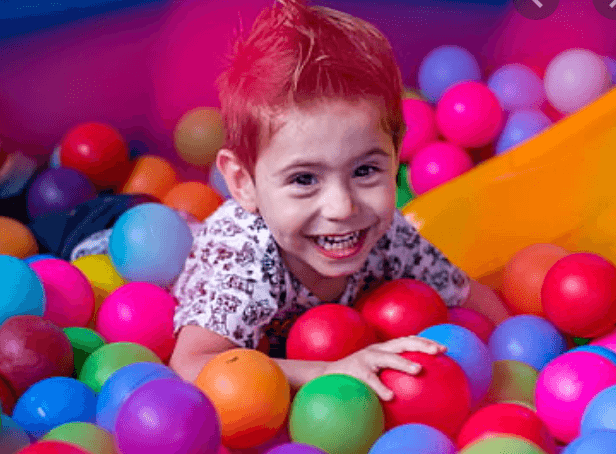Childhood Trauma Part 2 – The Wisdom of SMART
By: Sharon Burris-Brown, LICSW, NBC-HWC
Childhood Trauma Part 2-The Wisdom of SMART
SMART ROOMS
At the Union Plaza location of Lyn-Lake Psychotherapy, young kids and teens will soon be able to jump into crash pillows, crawl through fabric tunnels, do summersaults on mats, wrap themselves in weighted blankets, bounce on a trampoline or an exercise ball. You might think there is a playground inside this building. However, these play tools will all be part of Lyn-Lake Psychotherapy’s SMART room.
SMART stands for Sensory Motor Arousal Regulation Therapy. SMART is a body-oriented therapy modality for kids and teens who have experienced complex, developmental trauma.
Already sold on the power of the body’s role in healing trauma through her work as a trauma-informed yoga teacher, Mariah Rooney, LICSW, RYT naturally gravitated to body-oriented therapy processes to help kids and families who have experienced great adversities.
The 101 on Sensory Motor Arousal Regulation Therapy
SMART ties together the work of Occupational Therapists (1) that help kids who struggle with processing sensory information and trauma theory and research. O.T.s guide kids to create an optimal sensory experience for themselves through deep pressure, rhythmic movement and resistance allowing them to integrate sensory experiences they may have been deprived of, thus rewiring the brain to heal these deficits.
Children who go through repeated trauma especially from those people who are supposed to love and care for them, are particularly impaired. That part of the brain that deals with dangerous situations becomes over reactive and their “ability to process, integrate and categorize what is happening: at the core of traumatic stress” (2) breaks down.
SMART specializes with helping kids who have symptoms from complex trauma integrate trauma and sensory issues to heal both their bodies–enabling them to better regulate their emotions, their sense of self and to repair their ability to attach to a trusted caregiver.
“SMART is a highly adaptable treatment”, says Rooney. “It is both child-led and clinician guided”. The therapist will mirror what the child is doing as well as gently lead the child through movement and touch that will ultimately help that child get to an optimal sensory experience. This allows the child to meet his own sensory needs and to neurologically integrate the sensory experience.
Results
SMART reflects the research on trauma that shows trauma (3) is often re-experienced through the body and through sensory channels. SMART improves regulation of the body and the emotions through engaging the child in “embodied play” (3)—basically using the whole body in full sensory experience.
“Trauma is an inherent disruption in rhythm”, says Rooney. Rhythmicity shows up in the dance of action and response between infant and caregiver. It shows up in the sensory experiences of being held and rocked. “We get out of sync with ourselves and with others. SMART helps restore rhythmicity in relationships and connections to ourselves”, Rooney goes onto explain.
And in fact, early research has shown that SMART improves anxiety and depression (4) in traumatized kids and teens. Rooney has seen positive results in both the ability for these kids to manage their emotions: such as a decrease in problem behaviors like tantrums and defiance and a strengthening of the attachment bond with their trusted caregivers. In addition, many of these kids do better at school.
As a SMART-trained therapist, Rooney first mirrors and guides the child to go through the embodied play experience to its completion modeling to the child’s parent how to do this at home. “It is a great tool to build attachment”, she states. “A lot of caregivers have their own trauma and so there could be restoration and healing for them as well”.
SMART was one of the somatic or body-oriented therapies that was developed when research on how trauma affects the brain and the body explained why talk therapy had not helped these kids. “In fact, traditional talk therapy can be dysregulating”, Rooney states. Many of these kids have experienced trauma before they could speak. Therefore, trying to get at trauma through words does not work. “In addition, when an individual re-experiences trauma, the speech center part of the brain goes off line”, adds Rooney.
“One of the things that is amazing about SMART is it makes therapy much more accessible, because it can be fun for kids to move their bodies”, says Rooney. “SMART rooms offer space for exploration and the use of different things that interact with different sensory experiences. Our bodies have incredible wisdom for knowing what is needed to heal”
If you feel like you need the support of a mental health professional, remember that you’re not alone! If you have any questions, please contact us, we’re here to help!
Resources
1. Mariah Rooney-mariah@therapy-mn.com
2. The Minnesota Trauma Project- www.mntraumaproject.org
3. The Trauma Center at JRI-www.traumacenter.org
4. SMARTMoves-smartmovespartners.com
5. The Body Keeps the Score: Brain, Mind, and Body in the Healing of Trauma. Van der Kolk, Bessel MD. Penguin Books, 2014.
Articles
1. https://childmind.org/article/treating-sensory-processing-issues/
2. http://www.traumacenter.org/products/pdf_files/preprint_dev_trauma_disorder.pdf
3.https://www.researchgate.net/profile/Maggi_Price/publication/319319850_The_Boy_Who_Was_Hit_in_the_Face_Somatic_Regulation_and_Processing_of_Preverbal_Complex_Trauma/links/59cae2610f7e9bbfdc36b684/The-Boy-Who-Was-Hit-in-the-Face-Somatic-Regulation-and-Processing-of-Preverbal-Complex-Trauma.pdf
4. https://rampages.us/otebp/wp-content/uploads/sites/29816/2018/07/CAP-somatic-support-for-trauma-adolexcents.pdf

